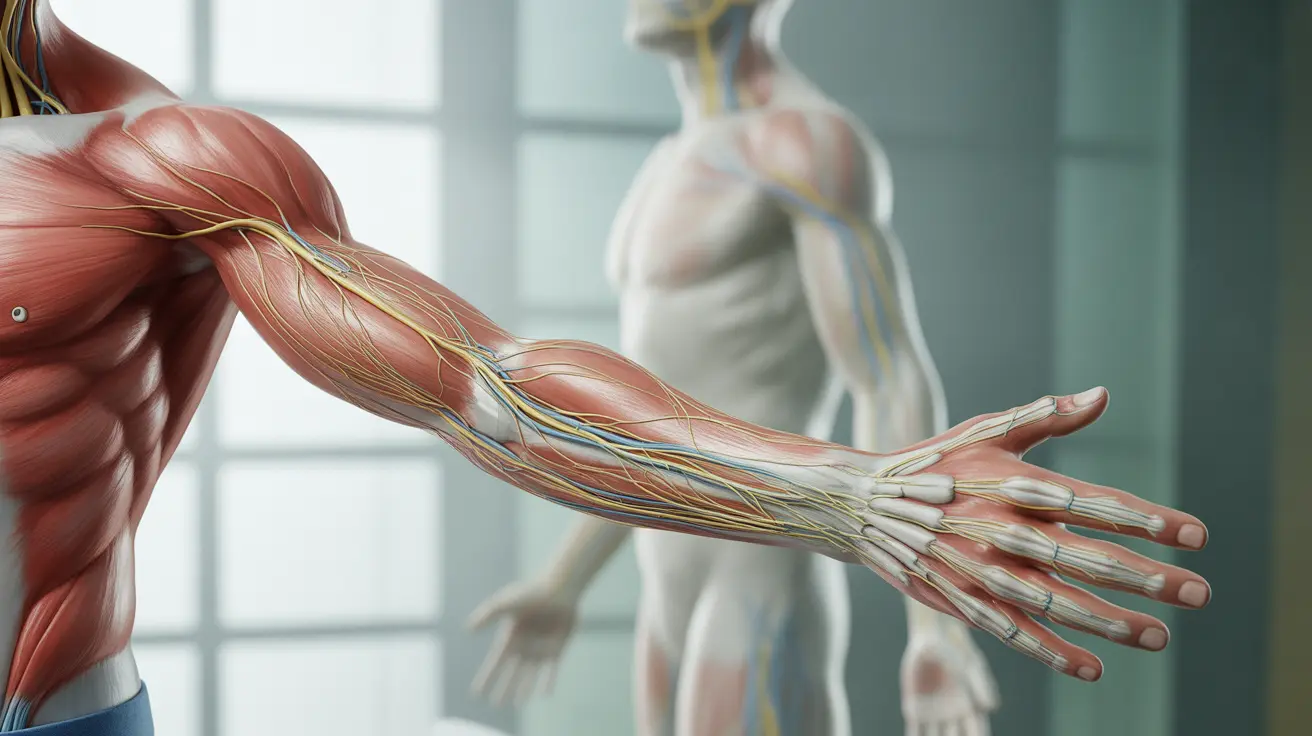If you're experiencing weakness in your wrist or having trouble extending your fingers, you might need a radial nerve injury test. Understanding what these tests involve and when they're necessary can help you better prepare for your medical evaluation and potential treatment journey.
This comprehensive guide will walk you through the diagnostic process for radial nerve injuries, including various testing methods, what to expect during examination, and how healthcare providers determine the best course of action.
What Is a Radial Nerve Injury Test?
A radial nerve injury test consists of several diagnostic procedures designed to assess the function and condition of the radial nerve. These tests help healthcare providers determine the location, severity, and cause of nerve dysfunction.
The evaluation typically begins with a physical examination and may progress to more sophisticated diagnostic tools depending on the findings.
Physical Examination Components
During the initial assessment, your healthcare provider will typically:
- Check wrist and finger extension strength
- Assess sensation in areas supplied by the radial nerve
- Evaluate muscle tone and reflexes
- Look for visible signs of injury or compression
- Test range of motion in affected areas
Advanced Diagnostic Procedures
Electrodiagnostic Testing
When necessary, your healthcare provider may recommend more detailed testing, including:
- Nerve conduction studies (NCS)
- Electromyography (EMG)
- Ultrasound imaging
- MRI scans in specific cases
These tests provide detailed information about nerve function and can help pinpoint the exact location of injury or compression.
Common Causes and Risk Factors
Understanding what leads to radial nerve injuries can help in both diagnosis and prevention. Common causes include:
- Pressure from improper positioning during sleep or prolonged activities
- Fractures, especially in the upper arm
- Repetitive motions or overuse
- Direct trauma to the nerve
- Compression from tight clothing or accessories
Identifying Wrist Drop
One of the most distinctive signs of radial nerve injury is wrist drop, where patients have difficulty extending their wrist and fingers. During testing, your healthcare provider will specifically assess this symptom and its severity.
Treatment Options Based on Test Results
The findings from radial nerve injury tests help determine the most appropriate treatment approach, which may include:
- Conservative management with splinting and physical therapy
- Medication for pain and inflammation
- Surgery in severe cases or when conservative treatment fails
- Occupational therapy for functional improvement
Recovery and Prevention
Test results also help predict recovery timelines and guide prevention strategies. Your healthcare provider can recommend specific exercises and lifestyle modifications based on these findings.
Frequently Asked Questions
What are the main symptoms of a radial nerve injury, and how do I know if I have wrist drop?
The main symptoms include weakness in extending the wrist and fingers, difficulty straightening the arm, and numbness or tingling on the back of the hand. Wrist drop is characterized by an inability to lift the wrist and hand up toward the ceiling when your arm is held out straight.
What does a radial nerve injury test involve, and are nerve conduction studies or EMG always necessary?
A radial nerve injury test typically starts with a physical examination, including strength testing and sensation assessment. While nerve conduction studies and EMG aren't always necessary, they're often recommended when the diagnosis is unclear or when detailed information about nerve function is needed for treatment planning.
Can a radial nerve injury heal on its own, or do I always need treatment?
Some minor radial nerve injuries can heal on their own with proper rest and protection. However, professional medical evaluation is important to determine the severity and appropriate treatment approach, as more severe injuries may require intervention to prevent permanent damage.
What are the most common causes of radial nerve damage, and how can I reduce my risk?
Common causes include pressure from improper sleeping positions, fractures, repetitive motions, and direct trauma. To reduce risk, avoid prolonged pressure on the upper arm, maintain good posture, take regular breaks during repetitive activities, and use proper ergonomic equipment.
How do doctors tell the difference between a muscle problem and a radial nerve injury when diagnosing wrist or hand weakness?
Doctors use a combination of physical examination findings, the pattern of weakness, and specific diagnostic tests. Nerve injuries typically show specific patterns of weakness and sensory changes that follow the nerve's distribution, while muscle problems often show different patterns and may affect multiple movements differently.




